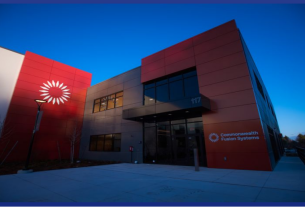
Today, the Commission adopted a proposal to amend the Market Stability Reserve Decision as regards the Market Stability Reserve (MSR) for the new emissions trading system for road transport and buildings (ETS2). This is a key step to deliver swiftly on the measures announced by Commissioner Wopke Hoekstra at the last Environment Council to ensure a gradual and smooth launch of the ETS2 and accelerate early investments.
“Today, we are delivering on the commitments we announced in October. These measures further strengthen stability and affordability within ETS2 and set us on a more predictable path toward a low-carbon future. We are setting the right conditions to keep prices in check and intervene swiftly if they go too high.”
Wopke Hoekstra, Commissioner for Climate, Net Zero and Clean Growth
The MSR is a long-term solution to the surplus of allowances on the EU carbon market aiming at rebalancing supply and demand as well as at making the carbon market more resilient to future shocks. The proposal to amend the MSR for ETS2 responds to the request from a broad majority of Member States and many MEPs and can be implemented prior to the launch of the ETS2 market.
This proposal would ensure stronger intervention if the price should go above a certain level, reinforce the capacity of the MSR to operate in the longer term, and ensure earlier and smoother intervention to stabilise the supply of ETS2 allowances.
Firstly, the MSR proposal adds a top-up mechanism to double the number of allowances to be injected if the carbon price exceeds EUR 45 per tonne (in 2020 prices), ensuring stronger intervention if the price should go above this level. With the top-up, up to 80 million allowances could be injected each year from the start of auctioning until the end of 2029. That is more than the required annual ETS2 reduction of 60 million tCO2.
Secondly, the proposal reinforces the capacity of the MSR to operate in the longer term, with the extension of the validity of ETS2 allowances in the reserve beyond 2030. With this amendment, all 600 million allowances will be available to be released in the market in case this is needed to stabilise the price. This amount is equivalent to 10 years of ETS2 emissions abatement.
Thirdly, an additional buffer is proposed to ensure earlier and smoother intervention to stabilise the supply of ETS2 allowances in the market above certain levels.
In addition to the proposed MSR change, the Commission will keep working to swiftly deliver on the other measures on the ETS2 implementation framework.
The Commission is proposing an earlier start of ETS2 auctions which will make revenues available already in 2027 for early investments and deliver an early price signal. The Commission has already consulted Member States’ experts on the draft amendments to the Auctioning Regulation with a view to adoption by the Commission in early 2026.
Finally, the Commission and the European Investment Bank are exploring a new ETS2 Frontloading Facility for Member States, to be launched shortly. The frontloading of ETS2 revenues could make available up to EUR 6 billion in the years 2026-2027. This comes on top of the national ETS2 revenues and the Social Climate Fund.
A gradual and smooth start of ETS2 is an important element in attaining the EU’s 2030 climate target and can complement Member States’ national measures in the buildings and road transport sectors. At the same time, it creates significant new revenue streams that can be used to support citizens and companies across Europe.
Background
The proposed measure can be implemented without amending the ETS Directive. Following today’s adoption, EU Member States and the European Parliament will need to agree on it before it can enter into force. Separately regarding the start of the system, both co-legislators have introduced a postponement of ETS2 by 1 year to 2028 in their respective positions of the 2040 Climate target proposal. Negotiations are starting soon, and this will need to be agreed and adopted before it can become fully applicable.
The new ETS2 system aims to drive emission reductions from the buildings and road transport sectors in a technology-neutral and competitiveness-friendly manner. This will be an important contribution to reaching EU’s climate neutrality goal by 2050.
